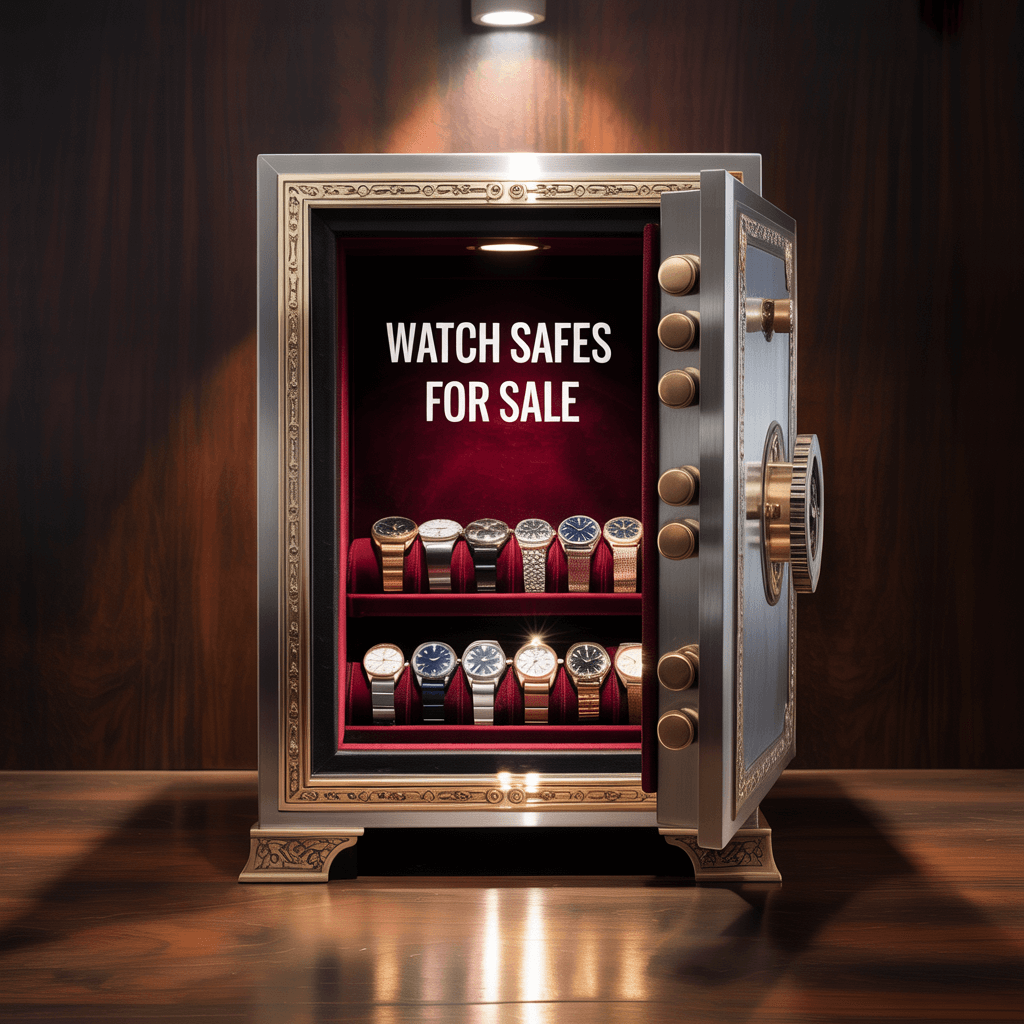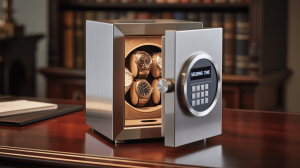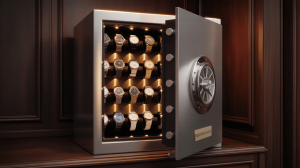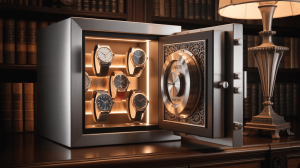Watch Safes for Sale: Find the Perfect Vault for Your Timepieces. But here’s the kicker… Your collection deserves more than a box—invest in a safe that secures, organizes, and elevates each watch.
1. Understanding Different Safe Types
From compact desktop safes to full-size under-bed vaults, watch safes vary by capacity, fire rating, and lock style. Mini safes fit 1–4 watches, while cabinet models hold 10–20 pieces and accessories. Consider your collection size, display needs, and available space before selecting a category.
| Safe Type | Capacity | Ideal For |
|---|---|---|
| Desktop Safe | 1–4 watches | Single owners |
| Under-Bed Vault | 6–10 watches | Medium collections |
| Cabinet Safe | 10+ watches | Avid collectors |
2. Security Certifications to Look For
Prioritize UL RSC or ETL burglary ratings and UL 72 fire ratings. A 30-minute fire rating keeps internal temps under 350 °F, protecting lubricants and gaskets. ETL burglary certification confirms resistance against drills and pry tools. These standards ensure your investment remains secure.
3. Lock Mechanism Options
Mechanical combination locks never need power but can be slower to open. Electronic keypads offer multiple user codes and time-delay features. Biometric scanners grant instant fingerprint access but require backup keys. Dual-lock models combine methods for maximum redundancy and speed.
4. Capacity and Interior Configuration
Inside, modular foam inserts, watch pillows, and adjustable trays tailor space to your collection. Removable winder modules convert storage bays into winders for automatics. Hidden pockets beneath trays store straps, tools, and paperwork neatly.
| Interior Element | Function | Benefit |
|---|---|---|
| Foam Inserts | Secure watches | Prevents movement |
| Winder Modules | Keeps automatics wound | Ready-to-wear convenience |
| Accessory Pockets | Store tools/straps | Organized extras |
5. Fire and Water Resistance Features
Some watch safes include intumescent gaskets and composite fireboards for fire protection, plus rubber seals for dust and splash resistance. Water-resistant models with IP54 ratings guard against moisture in basements or humid climates.
6. Noise and Vibration Considerations
If your safe includes watch winders, look for motors rated under 25 dB and rubber-damped mounts. Soft-close hinges prevent door slams. Quiet operation ensures the safe fits in bedrooms, offices, or living rooms without hassle.
7. Aesthetic Finishes and Materials
Choose finishes—matte black powder-coat, brushed stainless steel, wood veneers, or leather wraps—to match your décor. High-gloss piano lacquers add luxury, while satin finishes blend into modern interiors. Durable coatings resist scratches.
| Finish Type | Appearance | Durability |
|---|---|---|
| Matte Powder-Coat | Subtle contemporary | Scratch and fade resistant |
| Wood Veneer | Warm traditional | Requires gentle care |
| Leather Wrap | Rich texture | Stain and wear resistant |
8. Smart Connectivity and Monitoring
Modern safes integrate Bluetooth or Wi-Fi for tamper alerts, door-open notifications, and battery status updates. Apps let you remotely lock/unlock, adjust winder settings, and review access logs—offering peace of mind on the go.
9. Power Options and Backup Systems
Most electronic safes use AA batteries; opt for models with low-battery alerts or rechargeable packs. USB-C or solar trickle charging adds convenience. Always keep a manual override key or combination dial for emergencies.
10. Placement and Installation Tips
Determine whether your safe will stand alone or integrate into furniture. Anchor kits for floors, walls, or built-ins prevent removal. Always bolt into studs or concrete using manufacturer-specified anchors for maximum security.
| Installation Method | Location | Security Impact |
|---|---|---|
| Floor Bolt-Down | Under-bed or closet | Very high |
| Wall Mount | Closet or utility room | High |
| Furniture Insert | Cabinet or sideboard | Very high |
11. Budgeting and Value Analysis
Entry-level safes ($100–$300) cover basic security for small collections. Mid-range models ($300–$700) add fire ratings, winders, and climate control. Premium safes ($700+) provide biometrics, smart features, and luxury finishes. Weigh must-have certifications over optional extras.
12. Warranty and Customer Support
Manufacturers offering 2–5 year warranties on both structure and electronics demonstrate confidence. Check for onsite service, spare parts availability, and responsive support to address repairs or questions quickly.
13. Maintenance and Upkeep Best Practices
Keep the exterior clean with a soft cloth and mild cleaner. Dust interior linings quarterly. Test locks and winders monthly. Replace desiccant packs and batteries annually to maintain optimal performance and environment.
14. Shop Comparison and Reviews
Before purchasing, compare top models online and in showrooms. Read real-user reviews on noise levels, build quality, and customer service. Prioritize features that reviewers praise, such as lock reliability and display clarity.
15. Final Selection Checklist
Compile your criteria—capacity, security ratings, lock type, aesthetics, smart connectivity, and budget—into a shortlist. Cross-reference warranty, support, and user feedback to choose the perfect watch safe that aligns with both style and protection.
Conclusion
Finding the ideal watch safe means balancing security, functionality, and design. Ready for the good part? Use this guide to navigate options, compare features, and invest in a vault that secures and showcases your valuable timepieces beautifully.
FAQ
Q1: What burglary rating is essential?
Aim for UL RSC or ETL certification for proven forced-entry resistance.
Q2: Do smart safes require subscriptions?
Basic app features are free; advanced cloud services may incur fees.
Q3: How often replace desiccant packs?
Every 6–12 months depending on local humidity.
Q4: Are biometric locks reliable?
Premium scanners include encrypted templates and backup keys.
Q5: Can I retrofit an existing cabinet?
Yes—ensure structural strength and follow anchor guidelines.







